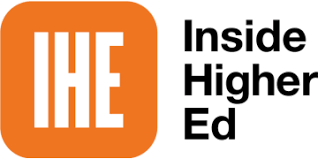
Yale College and the Poorvu Center for Teaching and Learning have established a new Office of Educational Opportunity, which will promote educational equity and ensure that all undergraduates have widespread and ready access to Yale’s educational, advising, and co-curricular opportunities. Karin Gosselink, director of the Poorvu Center’s Academic Strategies Program, was appointed aassistant dean for educational opportunity in Yale College and will lead the new office.
The following story featuring Karin Gosselink was published in Inside Higher Ed:
New Office at Yale Combines Success Resources, Promotes Access
By consolidating services, staff hope students will become more familiar with the resources available to them and more inclined to use them.
by Ashley Mowreader
To promote educational equity, Yale College and the Poorvu Center for Teaching and Learning collaborated to create the Office of Educational Opportunity. The new office, housed in the Sterling Library, opened in July and will facilitate connections between students to educational, advising and co-curricular activities starting this fall.
Leaders hope by centralizing resources, the office will create access for students and build on existing infrastructure to amplify what’s available, explains Karin Gosselink, director and assistant dean for educational opportunity.
“It signifies our commitment to building a Yale College that reflects the diversity of our nation and our world and to ensuring that all students admitted to Yale can thrive here,” a message from the college said.
The need: Previously, student success programming was housed solely in the Center for Teaching and Learning, but moving it into the residential college helps leverage the already-existing networks and connections to students, Gosselink says.
“At a highly resourced institution like Yale, there’s a lot to pay attention to, as a first year in particular but through all four years,” Gosselink says.
Often, students recognize one program but not others, “so having them all under the Office of Educational Opportunity allows them to have name recognition with that and then realize, ‘Oh, these programs are connected.’”
Over the past decade, the college has worked to reframe support services to be “resource-positive,” meaning additional help is not for students who are at a deficit but are tools every student should use. The reframing can be difficult for students who achieved success without outside help or those who come from less resourced high schools, but the Office of Educational Access works to ensure every student gets equal opportunity and support.
“We’re helping the students to make that mind-set shift of, ‘Actually, all of this is available to you and anybody can use it—why don’t you use it?’ because it’s part of the expectation,’” Gosselink says.
The office: The office will pull all services from the Academic Strategies program, including mentoring, workshops, specialized assistance for STEM majors, first-generation low-income learner (FGLI) supports, the disability diversity education program and accessibility services. Staff in these programs will continue to support the new office, fellows, undergraduate and graduate student mentors.
FGLI programs will remain shared between the Office of Student Engagement and the Poorvu Center.
The Office of Educational Opportunity will also establish an advisory committee of representatives from FGLI programs to understand best practices.
The goals: As students return this fall, Gosselink and her team will emphasize the flexibility of the various programs offered, just on a larger institutionalized scale.
“Our primary purpose is to support FGLI students; everything is designed to be accessible to FGLI students, but we’re not prescribing them to go step-by-step through the program. It really is, ‘What is it that you need?’” Gosselink says.
Even in the first month, Gosselink has found collaborations between the office and college representatives have been much easier, with increased communications to students. She also anticipates data sharing to be a significant advantage to programmatic development and growth.
Student interest has spiked with the reorganization, with interested learners reaching out to sign up for peer mentorships before the start of the term. Almost 90 students have signed up for the STEM Navigators program and around 120 students for the first-year readiness course.
“To be that far ahead already, just on the basis of a couple emails, is really extraordinary,” Gosselink says.
